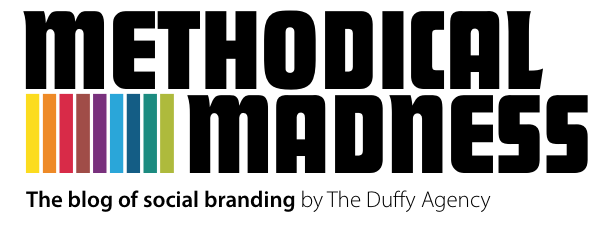6 Essential Parts to Any Content Strategy
 Friday, August 5, 2011 at 10:16AM
Friday, August 5, 2011 at 10:16AM In today's social media driven marketplace, we all know that content is king (and actually, to be more specific, optimized content is king). And to develop the best optimized content, you need to start with a content strategy.
Of course, there are entire books written on the subject of content strategy (two of my favorites are Content Strategy for the Web by Kristina Halvorson and Content Rules by Ann Handley and CC Chapman). However, I thought it would useful to give you some basics that you need to think about when developing your content strategy.
- Purpose
It may seem like a no-brainer, but the first thing you need to ask yourself is why are you developing the content in the first place. This is the "why" of content strategy. What do you hope to achieve with the content? If the answer to that question is "tell people about my product or service," then you also need to ask yourself, does your audience want to hear about your product or service? - SEO
Search engine optimization is a critical part of any content strategy. All the content you put on the Web, from tweets to web site copy, should be optimized and helping your audience find you through search engines. How do you determine what words you should be optimizing for? Well, that's for another post. But once you have developed your list of keywords, use them in all your content. - Subject matter
Once you decide why you want to create content, you next need to get a handle on what you'll be creating. It is important to remember during this phase that it is not about what you want to say ("my widget costs less than the other guy's widget"), it's about what your audience wants to hear ("I don't care about the cost, as long as the widget is environmentally friendly"). This is where we advise clients to take a step back. Before you start "talking," take a moment and listen. Research blog, groups and other sites where your audience is already having conversations. Find out what they want and what matters to them. You'll develop more engaging content if you first understand what is of interest to your audience. - Tone and style
Content is a chance for you to create a personality for your brand. How you say something can affect your brand as much as what you say. For example, a laid-back, surfer-dude tone would probably not work well with a financial institution. On the other hand, if a surf shop's content sounds like the financial report from the Wall Street Journal, then that probably doesn't help either. This is where a professional copywriter can help. A way to help visualize the tone of your copy is to think about an actor. For example, should the tone of the copy sound like Wilfred Brimley, very matter-of-fact and straight forward, or more like Tom Hanks, friendly and conversational. Most people have a reference point with movies and understand how different characters would sound. This type of exercise can make it easier to imagine what the tone of the content should be. - Distribution and Repurposing
This one seems pretty straight forward. Where will the content appear? Is it for Facebook or your web site? Will it be used in direct mail or banner ads? But something else to consider is the distribution lifecycle. That is, where will the content appear over time. With all the different media channels available to your audience—Twitter to TV—you may have to distribute content over several different channels in order to reach your target. So, when you think about distribution you should also think about how the content can be repurposed for all your media outlets. For example, a whitepaper could also be broken apart into blog posts, which, in turn, could turn into Twitter updates and Facebook posts. - Maintenance
Your audience (and search engines) love fresh content. To ensure that your content does not go stale, you should create a schedule of how and when your content is updated. You may find that some content is better served once a week, like a blog post. In terms of how often and when to actually upload content, I suggest you check out Dan Zarella webinar on August 23.
Again, this is just a brief overview of some things you should be considering when developing your content strategy. But I'd like to get your input. What are some other things a good content strategy should contain?
Kevin Duffy is the Creative Director for The Duffy Agency's Boston office.


Reader Comments (2)
Btw, thanks for checking out the blog!